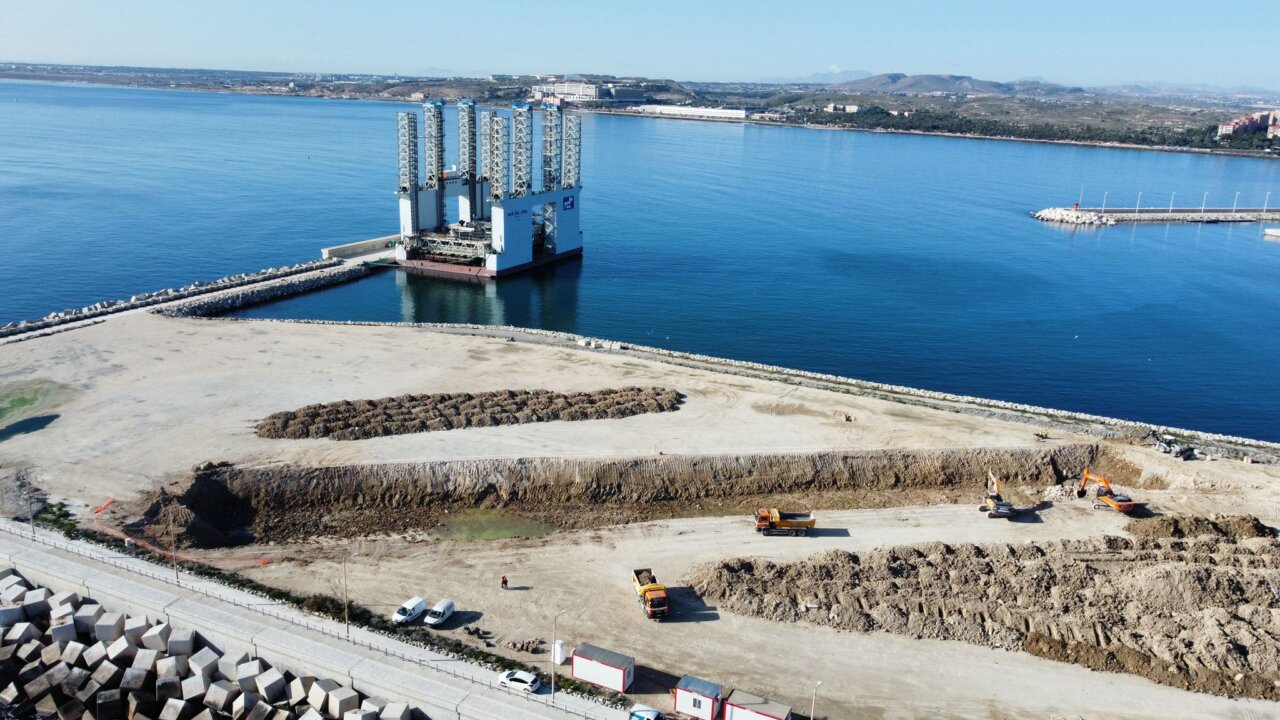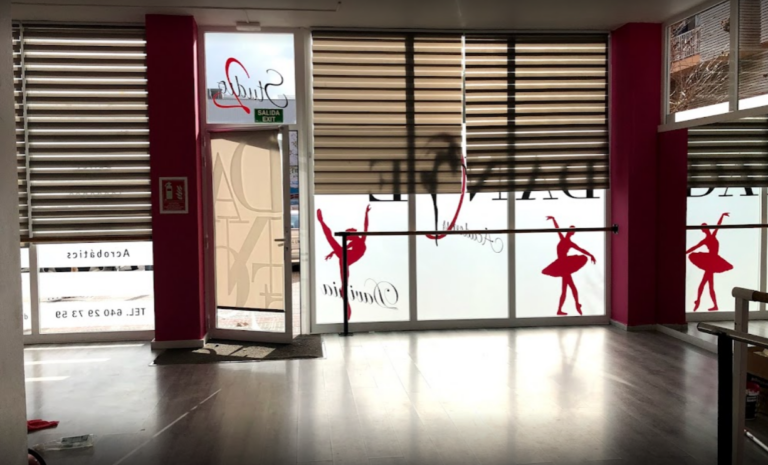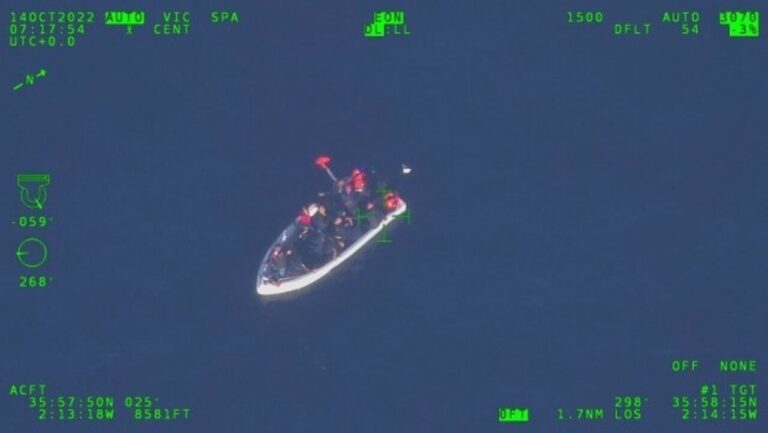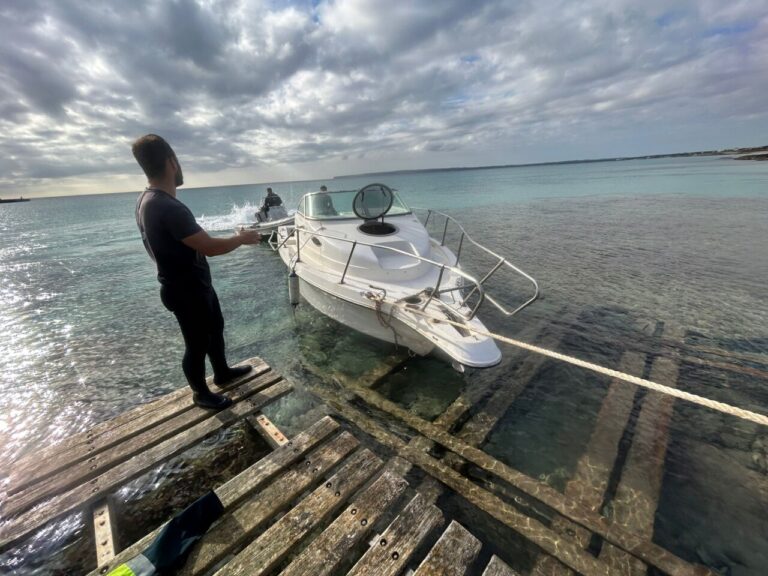Port Nàutic Ibizathe marina managed since 2024 by Puertos y Litorales Sostenibles in the historic facilities occupied for almost a century by Club Náutico Ibiza, will be the scene of a milestone in maritime engineering: in early May a floating breakwater will be installed , a unique development both in Spain and worldwide, which will protect the 269 vessels moored there by reducing waves by between 70% and 99%.
The dam will be no less than 145 meters long, 8 meters wide and 2.75 meters high.. Una sola pieza de concrete with thin walls and weighing 2,125 tons (2,125,000 kilograms). 2,125 tons (2,125,000 kilograms).. Su construcción comenzó en diciembre del año pasado en el p port of Alicanteand once finished it will be towed to the port of Ibiza. port of Ibiza. The project and the construction management are being carried out by Neos Maritime Consultingand its CEO, the engineer Rafael Torres Samperhas told La Voz de Ibiza the details, benefits and challenges of this innovative project.
The beginning of the project
-How did the floating breakwater project for Port Nàutic Ibiza come about?
–In the port of Ibiza there is an inland marina, a small and medium sized dock with 269 moorings. This marina was managed by Club Náutico Ibiza for 99 years, until May 2024. In March 2022 there was a squall called Celia, a weather phenomenon that occurs every two or three years, and generated very heavy damage to boats inside the port. This damage occurred as a result of some works that had been carried out at the end of 2021, specifically a fixed dock dock that was on the bottom of the sea was removed, leaving the marina unprotected. It is true that it was in precarious conditions but it provided a necessary shelter for the dock, and before the first storm of 2022, significant damage was suffered.
-What was done to solve this problem?
–The Port Authority of the Balearic Islands called a tender for the new concession of the club and proposed that whoever was the future concessionaire should resolve the situation of lack of shelter that had been generated from previous works, with the requirement that the solution to be sought was removable, ie not permanent. Two bids were submitted to this competition, that of the then Nautical Club and the bid of Sustainable Ports and Coasts, which was finally chosen.
-Why was a demountable solution required?
–The first thing that comes to mind is for future modification possibilities.
-How is your company involved in this issue?
–Those of us who lead Neos Maritime Consulting have been researching the design and operation of floating breakwaters for more than 20 years. We started around 2000 in another company, and by 2019 we started to make preliminary projects and tests of this technology. Sustainable Ports and Shorelines was aware of our development, contacted us for the competition, and we felt it was the best application we could make to our research. We presented a project that meets exactly the requirements of the specifications: a floating element, a solution that shelters and improves the conditions of agitation of the marina in these storms that occur with some frequency, and that in turn is removable.
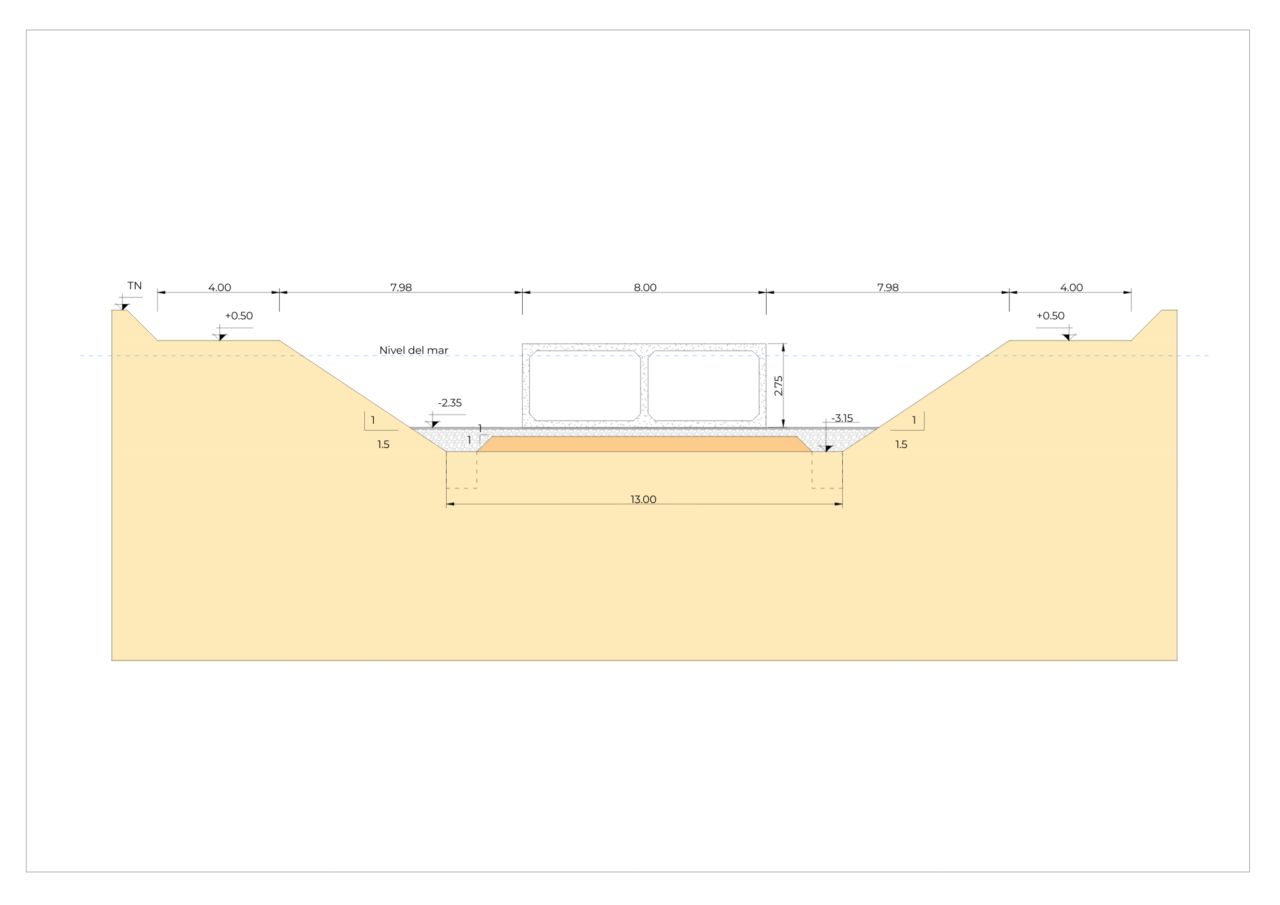
Technology and innovation
-What are the advantages of a floating dock over a fixed one?
–Conventional breakwaters are structures that rest on the bottom, like raising a wall from the bottom of the sea to the surface. This is how harbor shelters work, with dikes that stop the waves because the waves hit against them and are reflected or dissipated. Shelter dikes can be built at 10, 15, 20 or even 30 meters depth without major difficulties, but there are places, in Spain for example, where the depth reaches 120 meters. Therefore, a floating solution is the only economically viable solution. Another case is when we find environmentally protected bottoms, where this solution allows sheltering without hardly affecting the seabed. In addition, being on the surface, it allows water renewal.
-What is new about your technology?
–The great technological leap in this development is that we have the necessary tools to know exactly how any floating shelter dock works. Before, it was not possible to predict with sufficient credibility how much a dock will shelter depending on certain parameters, whether it is wider, higher, heavier or lighter, made of one material or another. With the analysis and calculation methodology we have developed, we can predict how a floating structure will behave (how much it will shelter) for each wave situation. We have done all the checks on scale models and validated our calculation tool. Our achievement has been to be able to create a method and knowledge that allows us to know the behavior, and from there we can specifically design a dock according to each need. Without this knowledge, it would be possible to build dykes by over-dimensioning them heavily, but that would imply a much higher cost, and it is still necessary to quantify this wave attenuation, for which there is no other tool in the state of the art in maritime engineering, as far as we know.
-What is the work like and what are the challenges involved?
-The dam is a large parallelepiped (like a shoebox) that is no less than 145 meters long, 8 meters wide and 2.75 meters high. It is a concrete element with thin walls and a weight of 2,125 tons. One of the challenges it faces is to build it in one piece, because it has to be rigid to ensure its proper functioning. Another problem we had to solve was how to float such a structure after having built it dry. For this we know that there are elements on the market, cranes that could do it, but the cost is unaffordable for this budget, so we opted for a more ingenious and cheaper solution: on December 16 we started the construction with a mega ditch in an esplanade near the sea in the Port of Alicante. This trench, with a bottom of about 3 meters below sea level, is kept dry so that we can build the dock inside it, dry, as if we were on land. Once the dock is finished, the trench is filled with water to float it. Finally, we will take the dock floating pulled by a tugboat and we will take it to the port of Ibiza.
-What will it be like to move such a concrete structure?
-Previously, in the port of Ibiza we have had to prepare all the work elements to “anchor” the floating dock. At the beginning of May and when the sea conditions are suitable, we will carry out the towing, finishing with the placement in Ibiza, probably at night. It will be a journey of approximately 36 hours. Once “hooked up” in Ibiza, we will have to finish fitting the equipment: mooring elements for the boats, electricity and water supply for each one, and safety elements so that it can be used as a marina dock.
Effectiveness and precedents
-How can the effectiveness of the floating dock be measured?
-The port of Ibiza has a particular morphology that makes the swell from the mouth of the harbor to enter, in certain conditions, with certain ease to the marina, making it especially vulnerable. For example, storms similar to Celia can cause a wave height between 60 and 80 centimeters inside the marina in its current state. The dike we are building, in addition to complying with all the Maritime Works Recommendations (ROM) proposed by Puertos del Estado, achieves a reduction of this swell of between 70% and 99%, depending on the characteristics of the incident swell. With this, the marina is sufficiently protected and its integrity is guaranteed.
-Is there any precedent for another floating breakwater in the world?
-The only one we know of is the Port de la Condomine in Monaco, France. It is also a floating dock, the same concept as the one in Ibiza, but much bigger, even with a parking lot and a shopping mall inside. What differentiates us from them is first the budget, that work has cost about 150 million euros, being greatly oversized as a breakwater. Secondly, it has not had the same precision in the calculation of its functionality as a floating dock as in our case. What there are on the market, even offered as floating docks, are small floating pontoons, which is what the marina currently has, but they do not have the same function.
-What is the difference between a floating pontoon and a floating dock?
-A pontoon is a floating or fixed element whose mission is the mooring of boats and the access of personnel to the same boats. And a floating dock, or any other type, is an element that serves to protect from waves. A floating dock can serve as a mooring, like this one, but its main mission is shelter. Therefore, its requirements are very different, and therefore, so is its design and sizing.
Continue reading
-
How was the plan orchestrated by the Port Authority to favor the Club Náutico de Ibiza
-
The Ibiza Yacht Club points against the Port Authority of the Balearic Islands and questions its role as an intermediary.

